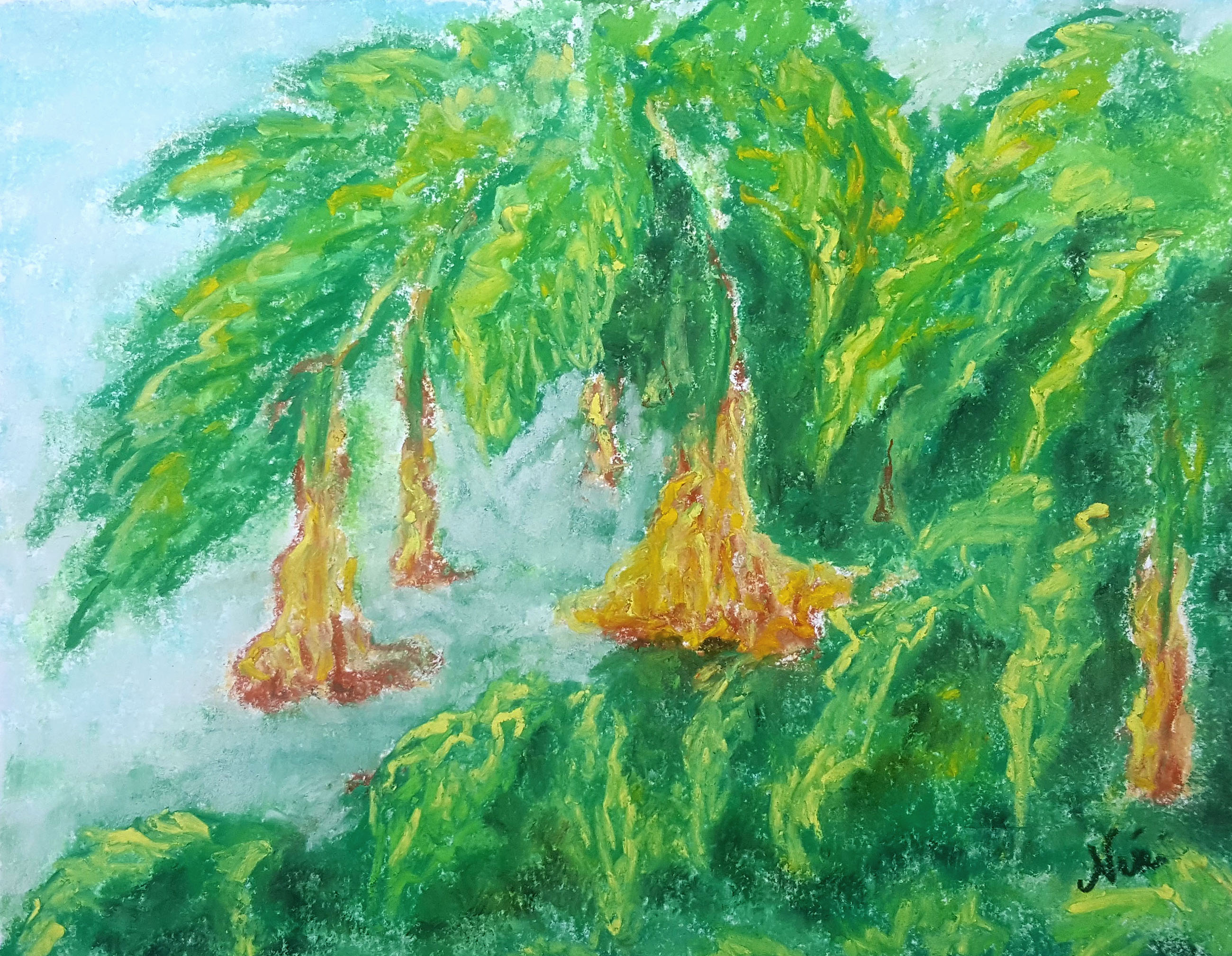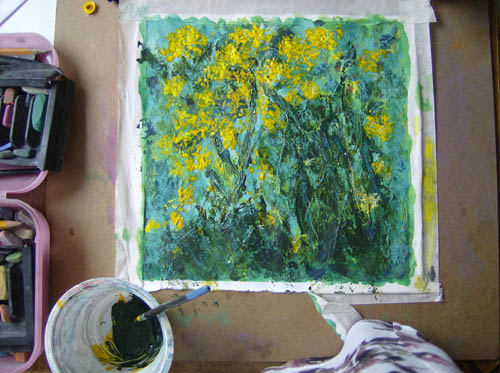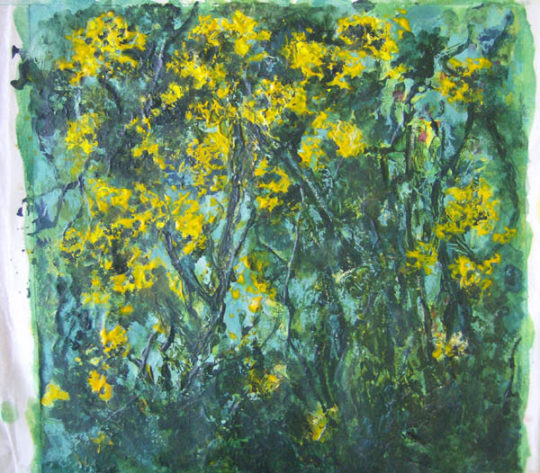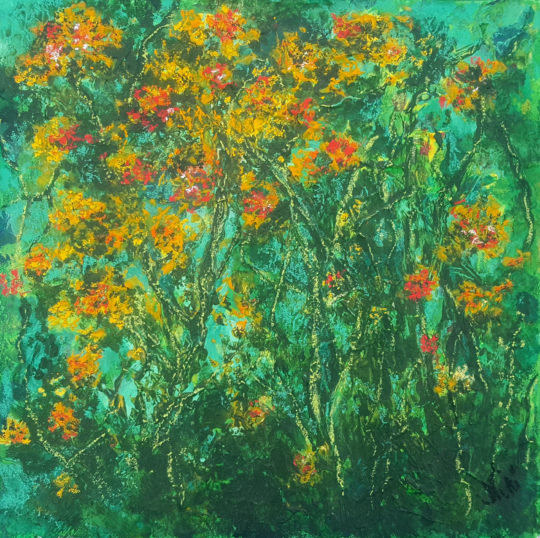
Consider each of these painting scenarios:
1. You’ve carefully planned a painting, including colors, composition, technique, and even the meaning behind your work. You paint as planned, and (for the most part) your painting comes out with all of your intentions realized.
2. You’ve carefully planned a painting as described in #1, but it comes out much different than planned (good or bad).
3. You start a painting with an idea in mind and a general plan (medium, size of piece, composition and general color scheme), but are not sure what the end result will be and prefer to just get into “the flow” of making your painting.
4. You just want to paint! You gather your materials and just start putting paint on canvas, figuring you’ll see what happens.
Do any of these sound familiar? Which one is your comfort zone? Is there a right way or wrong way to paint with intention?
As you can probably guess, this is an area that (in my experience) relies heavily on personal preference. I’ve been through all four scenarios! In my first years of painting as an adult, I often bounced between #1 and #4, depending on whether I was painting at home for fun or in class to learn. Once I began to apply what I learned in classes to projects at home, I more often than not ended up with the scenario described in #2. After many years, I’ve learned that my comfort zone is usually #3– starting with a general idea, but not being so wedded to my initial vision that I can’t enjoy the process of making a painting.
I think managing the tension between discovery and intention depends also on personality. There are times when I teach paintings lockstep, meaning we are all working on the same exact step of the painting at the same time. In those classes, the participants who generally like to feel in control of things seem to be in their comfort zone. There are other times when I teach workshops that involve a lot of freedom and creative decision-making, which is much more enjoyable for people who like to be spontaneous and experiment with their creativity.
In my own paintings, the more detailed my initial vision is, the more I will struggle. I prefer now to start with a basic composition and jump into the flow of painting, sometimes letting my medium guide me– this is especially true when I’m working with acrylic and the palette knife, knowing that the real painting will come when I layer it with pastel.
Sometimes I lose control of the medium and end up with a mess. I remember painting water lilies in watercolor class and losing my focus at some point during the lesson, which left me with a dripping mess of a painting that couldn’t be salvaged. I enjoy working with pastel because even though my mind might wander, I always seem to find my way back to finishing the painting.
I do think intention is important– I remember being repeatedly annoyed a few years ago by kids’ cartoons that encouraged kids to just be happy with what they painted even if they had no idea what they were painting– and conveniently labeling their paintings “abstract” when it didn’t look like what they intended. If you are frustrated because your painting is completely void of your original intentions, I think it’s good to explore why that happened (even if the outcome was pleasing). Did your mind wander? Did you enjoy the process more than meeting your original expectations (definitely my weak point!) Is there a technique you want to work on to achieve what you originally had in mind? It’s good to spend a little time with your painting when it’s done, and evaluate your intention versus the outcome.
Here are some work in progress pictures of a painting that actually started on top of another painting:



If you paint, how do you balance your intentions with the process of painting? Are you a planner, or do you prefer to see where your materials take you? If you enjoy looking at artwork, do you wonder what the artist originally intended for the painting? I often imagine that famous paintings had more to do with the artists’ personalities than we will probably ever know.
One thing motivating me to finish the painting above was to see how the textures and colors would look on Redbubble’s products!
Stop by my Daily Paintworks Gallery to see more botanic-inspired art!